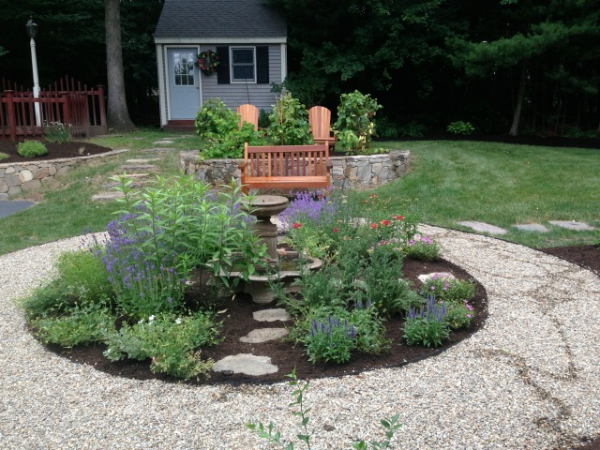 One of the best ways to create an ecological garden is by planting more native plants. Planting native plants enhances and supports your local ecosystem which has more benefits than we can imagine. When selecting plants think about companion planting. Many native plants have evolved along side each other and grow more naturally together. The following are two great examples of companion planting:
One of the best ways to create an ecological garden is by planting more native plants. Planting native plants enhances and supports your local ecosystem which has more benefits than we can imagine. When selecting plants think about companion planting. Many native plants have evolved along side each other and grow more naturally together. The following are two great examples of companion planting:
1. Garlic & Peach Trees: Garlic may be planted under or near peach trees to help repel peach tree borers which are a big problem. The Peach Reliance is a hardy, native, dwarf peach tree, known for it's heavy crop of fruits even after frigid winters. The peaches are medium to large with a sweet, mild flavor. Pink flowers bloom in early spring and the peaches ripen in early August. Peach reliance is a great addition to any landscape and can be easily fit in among other edible plants or within an ornamental design.
2. Dill & Lettuce: Dill is not good planted near carrots, lavender or tomatoes, but it is a great companion plant with lettuce. The flower heads of dill are a nectar source for many beneficial insects in the garden, as well as repels aphids and spider mites and potentially squash bugs. Unfortunately, dill does attract tomato horn worm thus why you do want to plant them near each other.
The list could go on and on with companion planting do's and don't, but overall the general theme is that proper research and design can create a beautiful year long landscape with edible and native plants that bloom with various colors and textures, give food throughout the year, and most importantly create a healthy ecology right in your own backyard.
Want to learn how to create a landscape for your yard that will help you relax, connect with nature, and replenish your energy? Please download our free ebook, How to Maintain Your Landscape and Transform It Into a Beauty You'll Love.



 One of the best ways to create an ecological garden is by planting more native plants. Planting native plants enhances and supports your local ecosystem which has more benefits than we can imagine. When selecting plants think about companion planting. Many native plants have evolved along side each other and grow more naturally together. The following are two great examples of companion planting:
One of the best ways to create an ecological garden is by planting more native plants. Planting native plants enhances and supports your local ecosystem which has more benefits than we can imagine. When selecting plants think about companion planting. Many native plants have evolved along side each other and grow more naturally together. The following are two great examples of companion planting: